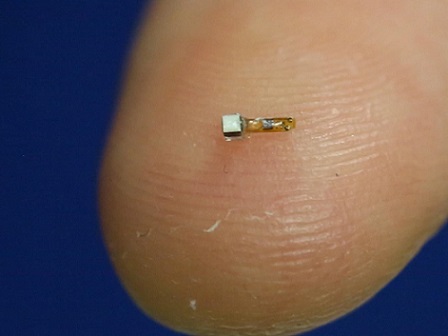 Medical monitoring devices are becoming more popular due to real-time tracking of internal data for things like heart rate, sleep and steps. Currently the most common monitors come as wearables, such as a watch or sticker, which attach to a person’s skin to receive data from their bodies. Though effective, these wearables are primarily used for basic personal monitoring and not very reliable to use medically for extended periods of time.
Medical monitoring devices are becoming more popular due to real-time tracking of internal data for things like heart rate, sleep and steps. Currently the most common monitors come as wearables, such as a watch or sticker, which attach to a person’s skin to receive data from their bodies. Though effective, these wearables are primarily used for basic personal monitoring and not very reliable to use medically for extended periods of time.
Researchers from the University of California, Berkeley, have recently created a tiny wireless monitor designed specifically for health sciences that can track nerve signal and muscles in real time, from inside of the body. The device, called Neural Dust, could be used for a variety of applications, from checking internal organs to controlling prosthetics.
Neural Dust is extremely tiny, measuring only 1 millimeter wide by 2 millimeters long. This almost microscopic device contains a combination of sensors and piezoelectric crystals able to turn ultrasound vibrations into electricity. When ultrasound is produced outside the body, the crystals begin to vibrate, creating motion which powers the system, allowing the electrodes to pick up electrical activity. These electrodes change the ultrasound signals, which travel back to the source and produce an tremendously accurate read out.
A huge benefit of the Neural Dust is a longer device lifespan due to its size and simplicity. Furthermore, since its system is so small it has less negative impacts when placed near the brain or spine. The smaller the system, the less scar tissue the body creates in defence of an invasive object.
Improved medical devices are continually being produced in the health science industry, offering further benefits and enhanced quality over older models. Eclipse’s knowledge and experience in health science and electronic products, along with its data tracking capabilities enables the company to provide clients with the best turnkey solutions regardless of project scope or size.
Source: ScienceNews



